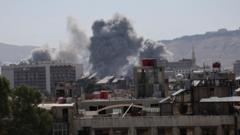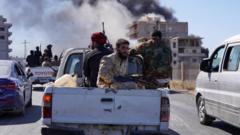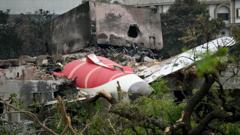A recent report into the tragic sinking of the Bayesian superyacht last year reveals severe design vulnerabilities, compounded by human error, which ultimately led to the loss of seven lives off the coast of Sicily. As determined by British maritime authorities, extreme wind gusts were responsible for the yacht's rapid capsizing.
Bayesian Tragedy: Investigation Reveals Structural Flaws Led to Yacht Sinking

Bayesian Tragedy: Investigation Reveals Structural Flaws Led to Yacht Sinking
An official investigation uncovers critical design issues and human error linked to the fatal sinking of the Bayesian superyacht.
The Bayesian superyacht, renowned for its impressive single mast, encountered catastrophic conditions as a storm approached. A young deckhand, mistakenly prioritizing social media over safety, delayed notifying the captain of the impending threat. This crucial lapse contributed to the yacht sinking within minutes of the captain being woken.
Captain Andrew Moll, chief inspector of marine accidents for the UK’s Marine Accident Investigation Branch, stated, “The findings suggest that the extreme wind conditions were more than capable of overturning the yacht.” Once the vessel tilted beyond 70 degrees, it became impossible to recover.
The report highlighted that the Bayesian’s towering mast, one of the tallest globally, significantly increased its risk of capsizing during high winds. This insight aligns with earlier findings reported by The New York Times, which noted that prior models from the same manufacturer featured two masts for improved stability, contrasting sharply with the single-mast design of the Bayesian.
While the manufacturer had claimed that the yacht was “unsinkable” under proper operation, external experts evaluating the investigation expressed concerns regarding the yacht's overall stability, questioning its ballast and superstructure.
The investigation underscores the importance of both vessel design and crew readiness, raising questions about regulatory oversight in yacht manufacturing. As grieving families seek closure, the findings also serve as a stark reminder of the potential dangers facing sailors and the need for vigilance in responding to marine hazards.
Captain Andrew Moll, chief inspector of marine accidents for the UK’s Marine Accident Investigation Branch, stated, “The findings suggest that the extreme wind conditions were more than capable of overturning the yacht.” Once the vessel tilted beyond 70 degrees, it became impossible to recover.
The report highlighted that the Bayesian’s towering mast, one of the tallest globally, significantly increased its risk of capsizing during high winds. This insight aligns with earlier findings reported by The New York Times, which noted that prior models from the same manufacturer featured two masts for improved stability, contrasting sharply with the single-mast design of the Bayesian.
While the manufacturer had claimed that the yacht was “unsinkable” under proper operation, external experts evaluating the investigation expressed concerns regarding the yacht's overall stability, questioning its ballast and superstructure.
The investigation underscores the importance of both vessel design and crew readiness, raising questions about regulatory oversight in yacht manufacturing. As grieving families seek closure, the findings also serve as a stark reminder of the potential dangers facing sailors and the need for vigilance in responding to marine hazards.






















